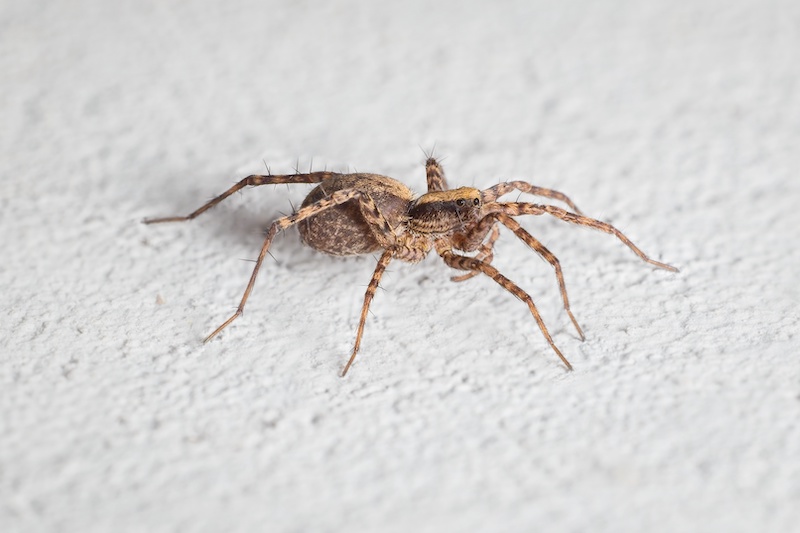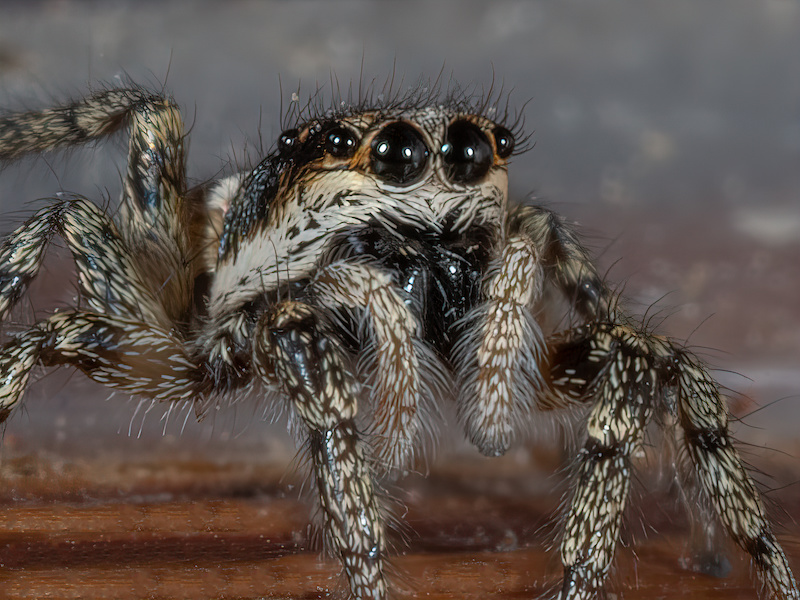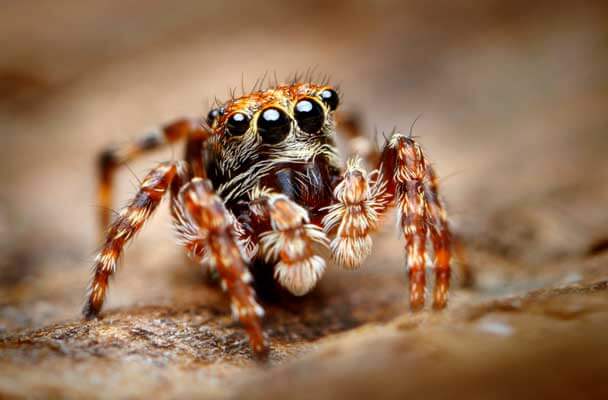UPdated April 25, 2025
As the seasons change and temperatures drop, many homeowners contend with an unwelcome invasion: spiders. In the Pacific Northwest, you could run into the hobo spider (Eratigena agrestis), giant house spider (Eratigena atrica), bold jumping spider (Phidippus audax), or American house spider (Parasteatoda tepidarorum).
Whether you’re dealing with unwanted house guests or trying to eliminate harmful intruders, understanding the spiders in your home is the first step toward effective pest management. Keep reading while we uncover everything you need to know about these four common Pacific Northwest spiders!
Giant House Spiders

The giant house spider is one of the largest spider species you’ll find in the Pacific Northwest. Whether you’re dealing with giant house spiders in Washington or stumbling across them in Oregon, they’re tough to miss thanks to their impressive size and web-building skills.
Physical Characteristics
The giant house spider usually sports a dark brown body, occasionally with lighter markings on its abdomen. Its legs are lighter, ranging from sandy brown to yellowish, often with darker streaks. You’ll notice the whole body, including the legs, covered in fine, velvety hairs. Around its eight small eyes, there’s a subtle darkening against the surrounding color.
Web Structure
Giant house spiders are prolific web builders, spinning intricate webs around homes and structures. Their webs typically feature a funnel-shaped structure at one end, serving as a shelter for the spider.
Unlike some other spiders in the Pacific Northwest, the threads of giant house spider webs are not sticky and are often messy and flat. They tend to construct their webs in corners, both on ceilings and floors, with a preference for areas near windows where insect activity is typically higher.
Hobo Spiders

Hobo spiders are common throughout the Pacific Northwest, especially in Washington and Oregon. These ground-dwelling spiders prefer cool, dark, and undisturbed areas, making basements, crawl spaces, and sheds their ideal hideouts.
Physical Characteristics
Hobo spiders lack the dark color bands characteristic of giant house spiders’ leg joints. These pests also have a light stripe running down their abdomen and light spots scattered along their length. Around each fang, hobo spiders have tiny, round sacs where they store their venom.
Web Structure
Hobo spiders build funnel-shaped webs at ground level rather than high up like other spiders of the Pacific Northwest. They prefer dark, damp areas such as basements, crawl spaces, and ground-level vegetation. Their hunting style involves waiting patiently in their funnel web for unsuspecting prey to wander by.
American House Spiders

The American house spider is one of the most common house spiders in Washington state and Oregon. Despite their small size, they’re incredibly resilient and can thrive indoors year-round.
Physical Characteristics
Compared to their larger counterparts, American house spiders are generally smaller, typically ranging between 4 and 6 millimeters in length.
Their bodies feature a predominantly brown hue embellished with distinct patterns of black and white spots. These markings enhance their intricate appearance and camouflage them effectively within diverse environments.
Web Structure
American house spiders are skilled at weaving intricate cobweb structures, perfect for trapping prey efficiently. With their synanthropic nature, they excel at thriving near human habitats, using manufactured structures to support their survival.
As a result, you’ll often find their webs strategically placed in concealed spots in basements, attics, and behind appliances..
Jumping Spiders

Jumping spiders belong to the most prominent family of spiders globally, boasting over 6,000 species, a staggering 13% of all spider species fall under this diverse category!
Physical Characteristics
One of the most distinctive features of jumping spiders is their unique eye structure, with eight eyes arranged in two rows.
The front row contains four eyes, often larger and more prominent, while the back row has four smaller eyes. This arrangement gives jumping spiders excellent vision and depth perception, which they use to accurately judge distances when pouncing on prey or navigating their surroundings.
In terms of size, jumping spiders typically range from 4 to 18 millimeters in length, boasting a compact and agile build.
Web Behavior
Unlike many other spider species, jumping spiders eschew traditional web-building behavior, relying instead on their remarkable agility and keen hunting instincts to capture prey. Using their jumping abilities, these pests can easily cover short distances to pursue and ambush their prey.
Although they don’t build webs to catch prey, jumping spiders still produce egg sacs, commonly found in the nooks and crannies of building exteriors or other sheltered spots.
Control Nuisance Spiders Around Your Home
Dealing with spiders of the Pacific Northwest can be tricky, but protecting your home from spiders has never been easier with Natura! Our highly trained technicians use advanced techniques and environmentally friendly products to eradicate common spiders in the Pacific Northwest and prevent future infestations.
In addition to spider control, our comprehensive pest management services target a variety of common household pests, keeping your home safe and comfortable for you and your family. Contact us today!



